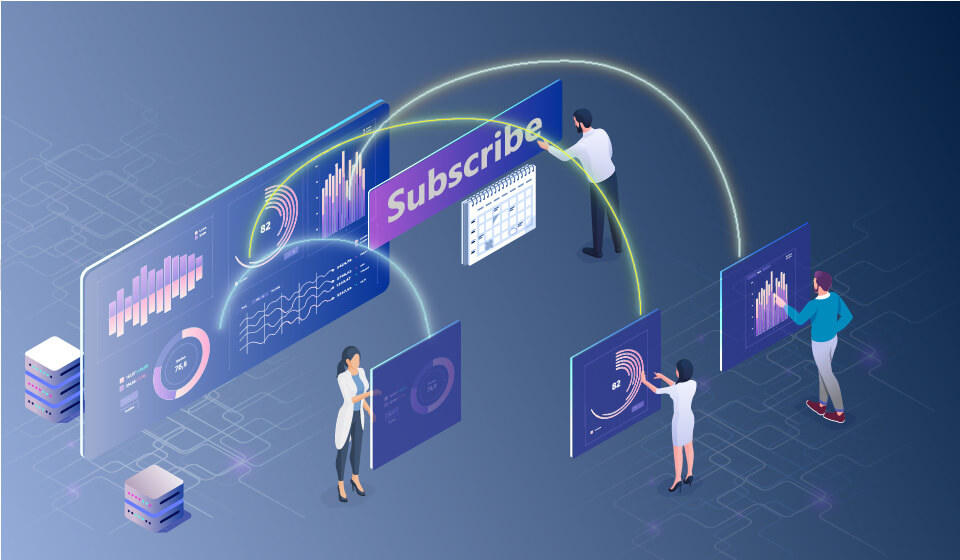The administrative overload of ensuring each user receives all their reports in the right format at the right time can be overwhelming. Self-service analytics, by definition, should provide the ‘right’ information, at the ‘right’ time, in the ‘right’ place, in the ‘right’ format, to the ‘right’ person—driven by that person. Pyramid’s “Subscriptions” feature provides another avenue, amongst many others, allowing end-users to create “push-based” reporting for themselves.
The problem
Interactive reports and dashboards are frequently used for custom slicing and dicing, but still require the user to actively log in and consume the content. There are still many users that prefer to just receive a static version of the content in their mailbox that has been pushed to them. As such, users often want to schedule personalized report distribution for themselves on an ongoing basis.
In classic enterprise reporting software, administrators must individually schedule multiple reports for multiple users and cancel schedules when not required. Catering for this personalization requires enormous administrative effort. Worse, it leaves little room for end-user customization of the content—like document format, time of delivery or slice of data.
Pyramid’s solution
Pyramid offers self-service report subscriptions that can be scheduled at any time or frequency. Distribution options include emails, the internal Pyramid Bulletin Board portal, or third-party web-hook channels like Microsoft Teams, Slack, or others (see blog). Users can choose output formats like PDF, PowerPoint, Excel, Word, JSON, XML, PNG, and HTML. Subscriptions can be directed to the user or even to multiple users or roles using Pyramid’s security framework. In addition, subscription definitions are dynamic, so any subsequent changes made to roles, report names, et cetera are generated in real time at the time of distribution.
Business case
Lauri is a regional product manager for ACE Retail Cycles, where they have a Pyramid installation on an Exasol database. Lauri views the company sales report, and after selecting her California region and the Touring Bikes Sub Category that she has been managing, she wants to subscribe to the report for herself and her team on a weekly basis.
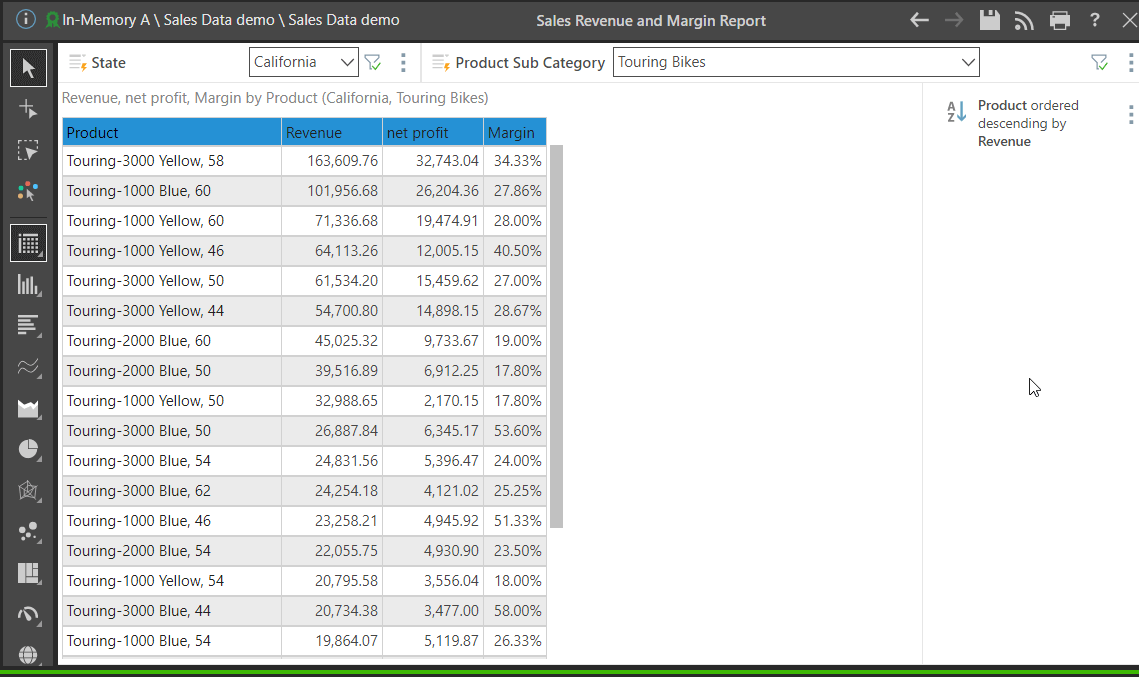
Lauri wants her report delivered in Excel, so she clicks on the subscribe icon and selects Excel as the output type.
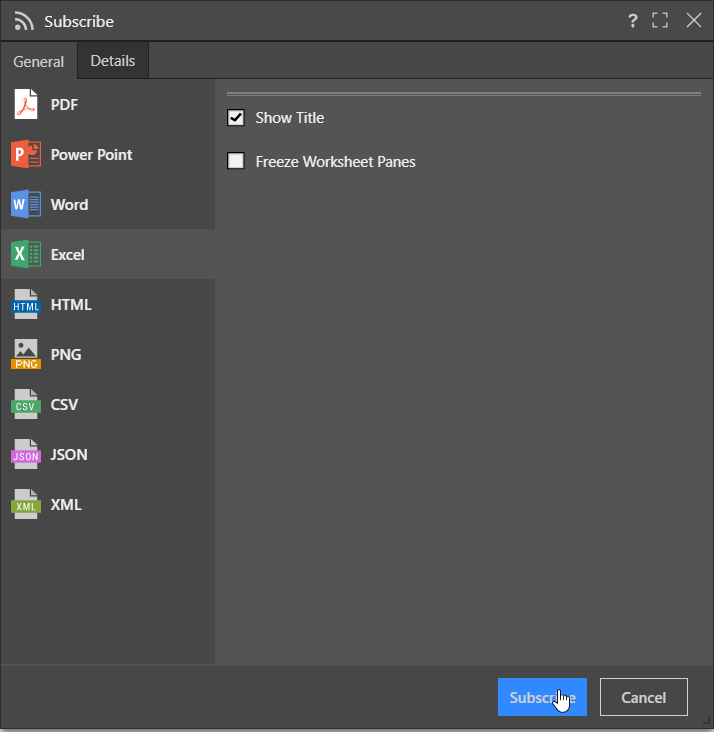
Next, Lauri wants to schedule the report to be delivered every Friday at 12:00 p.m., so she configures the recurrence from the Schedule tab.
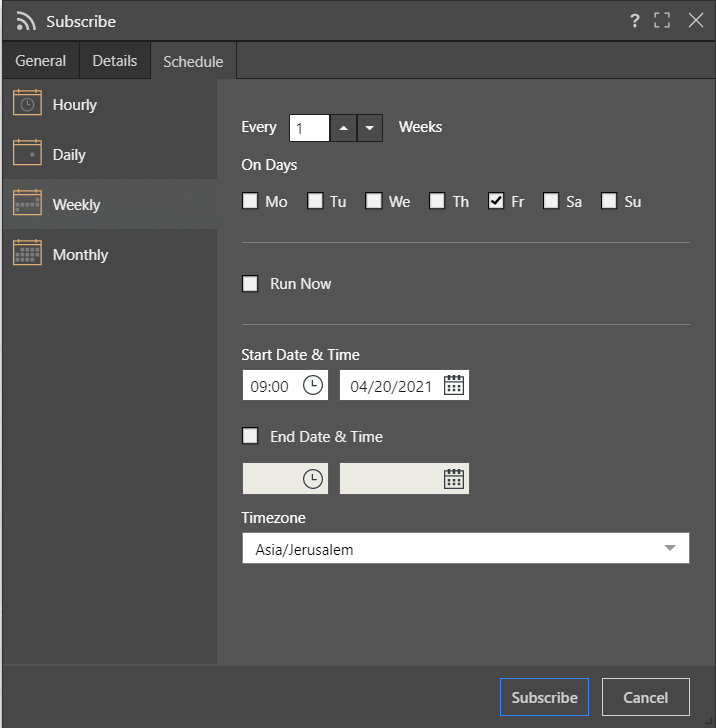
Lauri then wants to ensure continuity even if new staff join, so she uses virtual addresses for her regional product team in the distribution list.
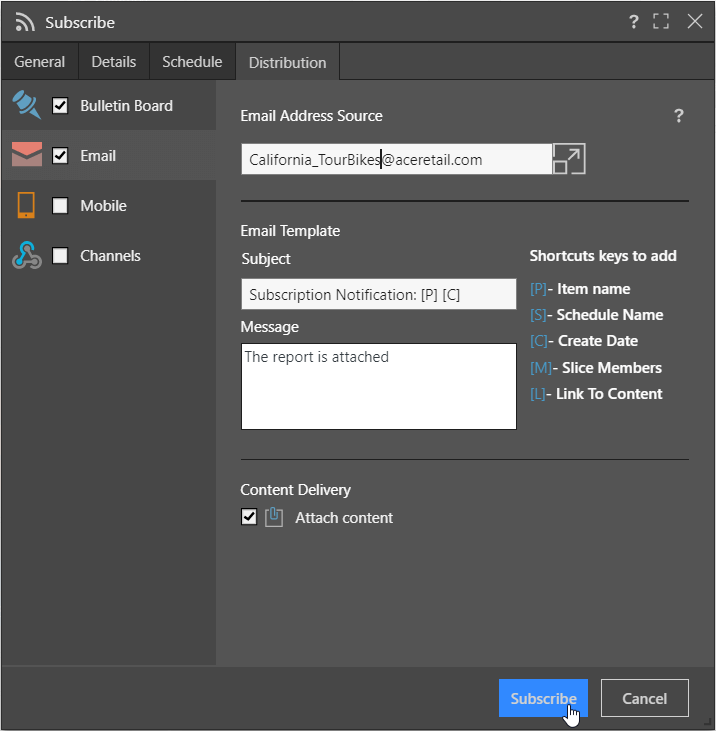
Bob, the finance manager for the European Region, wants to distribute the finance portion (slide 2) of the Executive dashboard via Slack. After selecting the European Region, Bob selects PowerPoint as the output type and uses the partial option to schedule the first slide of the dashboard.

Bob then uses the advanced distribution option to select his Europe Finance Group Channel, as this is the company standard tool used to collaborate on finance issues.
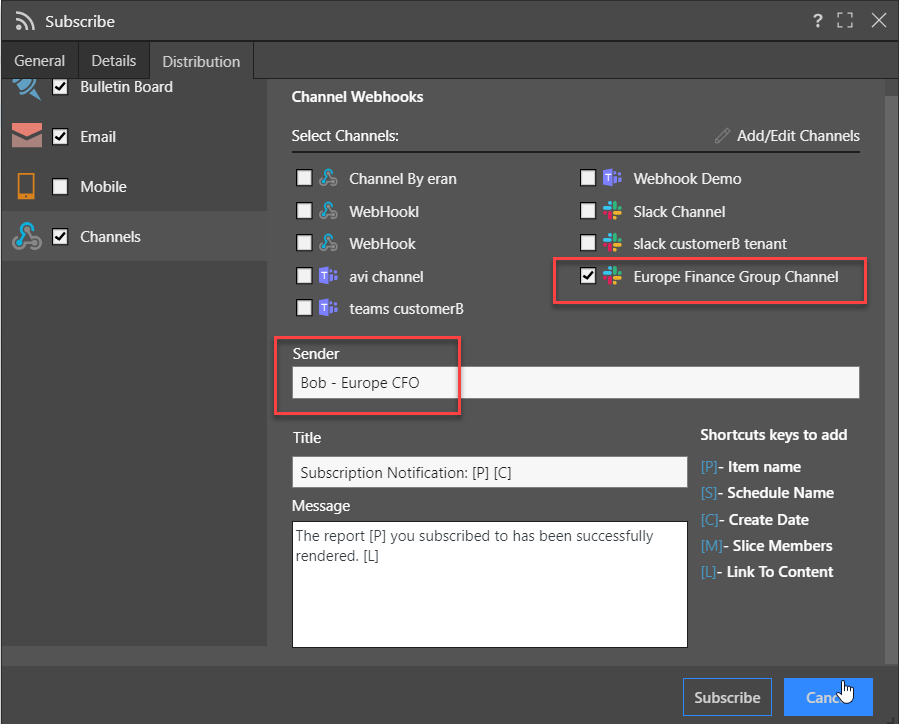
Summary
A critical element of self-service is allowing a user to subscribe to a dashboard or report and schedule the delivery at the desired time. Pyramid offers effortless subscription to any report or dashboard at any time or frequency, with a wide range of formats. Reports can be distributed by role or user to emails, bulletin boards, or third-party channels using Pyramid’s security framework.



